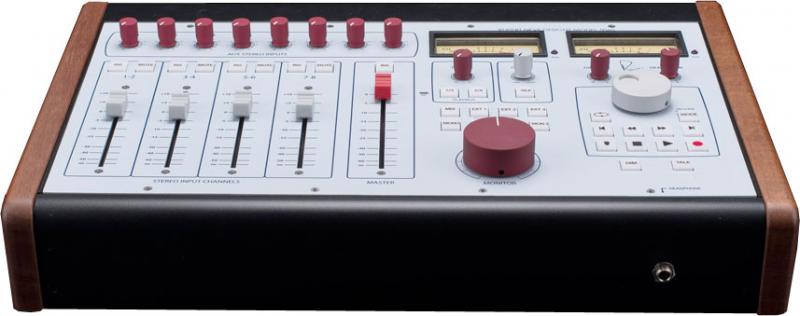5060 Centerpiece
Delivery & Shipping
Delivery & Shipping
Free Shipping in Canada with orders over $200. Conditions apply. View details here.
Financing
Financing
Affirm
Break your purchase into easy monthly payments, quick approval and no hidden fees.
Click here for more info.
Equilease
Ideal for larger purchases, Equilease offers customized leasing solutions to fit your business needs.
Click here for more info.
Returns & Policy
Returns & Policy
You can review our terms and conditions here
Description
Description
Sized for your desktop, the 5060 delivers the tonality and center section features of Rupert's flagship 5088 console at your fingertips, cementing outboard together with serious custom transformers, flexible monitoring, DAW transport controls, and the raw power of a Rupert Neve-designed 24x2 mix-buss.
Define Your Workflow With a modular, hybrid analogue/digital mix system built around the 5060, you can outfit your studio with exactly what you need - and nothing that you don't (see configurations guide here). Utilizing modern DAW control technologies, the 5060 seamlessly integrates stem outputs from the DAW with the rest of your control room, sums the final mix, and provides 2-track outputs, source selection, and speaker feed outputs from the monitor section.
Used in conjunction with 5059 mixers and Portico modules, the 5060 forms the core of a scalable analogue system. In this arrangement, the 5059s provide individual channel control, aux routing, and expandable channel counts, the Portico modules provide preamplification, EQ and dynamics, and the 5060 unites it all. The 5060 brings your dreams of a seamless hybrid workflow to reality.
Define Your Tone With custom transformers, a class-A mix buss and variable Silk, the 5060 can provide a wide range of tonal flavors. Drive the mix buss hard and crank the Texture knob for a rich, saturated, vintage vibe - or disengage Silk entirely for clear, wide-open sonic beauty.
Silk reduces the negative feedback on the output transformer, adding harmonic content as the texture is increased. Silk red mode accentuates the saturation in the high-mids and highs, while silk blue mode features more saturation in the lows and low mids.
With Silk engaged, the distortion characteristic and harmonic content of the unit are very reminiscent of many of Rupert's class-A vintage designs. These controls add an unparalleled range of tonal options to the 5060 and should be explored creatively with a variety of different sources for best effect.
Additionally, by using 5059 Satellite Mixers to feed the 5060, you can further control the tone by using different Silk & Texture settings on the dual stereo outputs,and by creating parallel processing on the stems using the insert sends into processors, and then into stereo inputs 9-24.
The New Analogue Standard While digital technologies come and go, the modular, class-A analog designs Rupert created decades ago have been proven to stand the test of time. Instead of merely cloning these "classics", Rupert's team of engineers have crafted new designs - built on the same key principles - that take sonic performance, flexibility and ergonomics to new heights.
These designs embody the high voltage, class-A, discrete and transformer coupled architectures found in the 5088 console, which represent a culmination of Rupert's vast analogue circuitry knowledge.
With the 5060 Centerpiece, the primary aim is to deliver the extraordinary quality of the 5088 in a compact, modular framework. With an abundance of interconnectivity, exceptional fidelity, and the tonal versatility of Silk, the 5060 is the ideal core of the sound-conscious modern studio.
Features
Features
Specifications
Specifications
Payment & Security
Your payment information is processed securely. We do not store credit card details nor have access to your credit card information.




